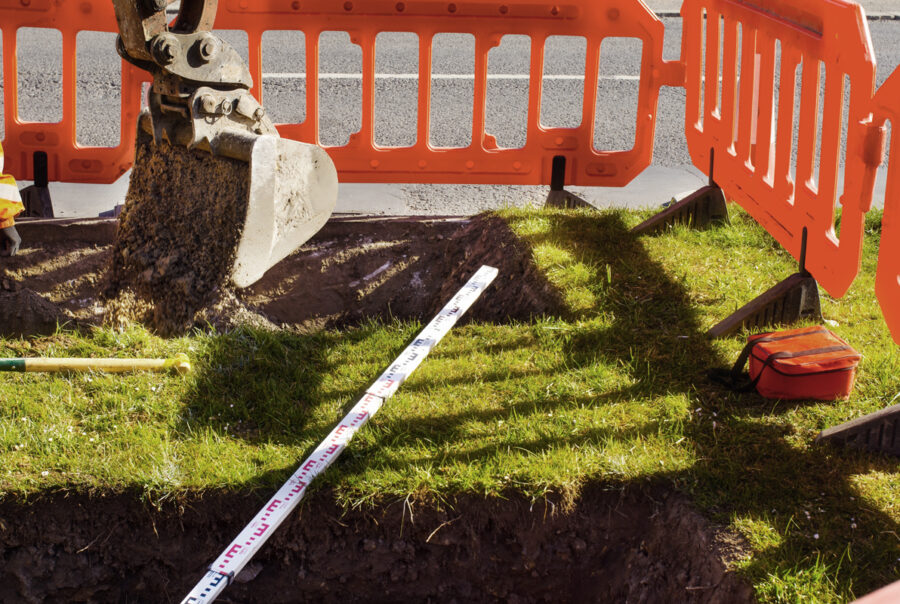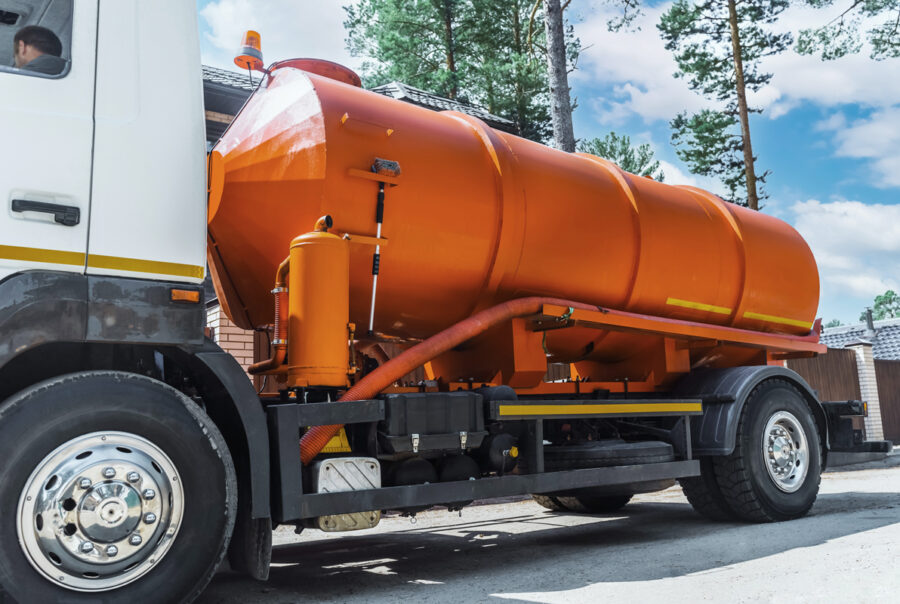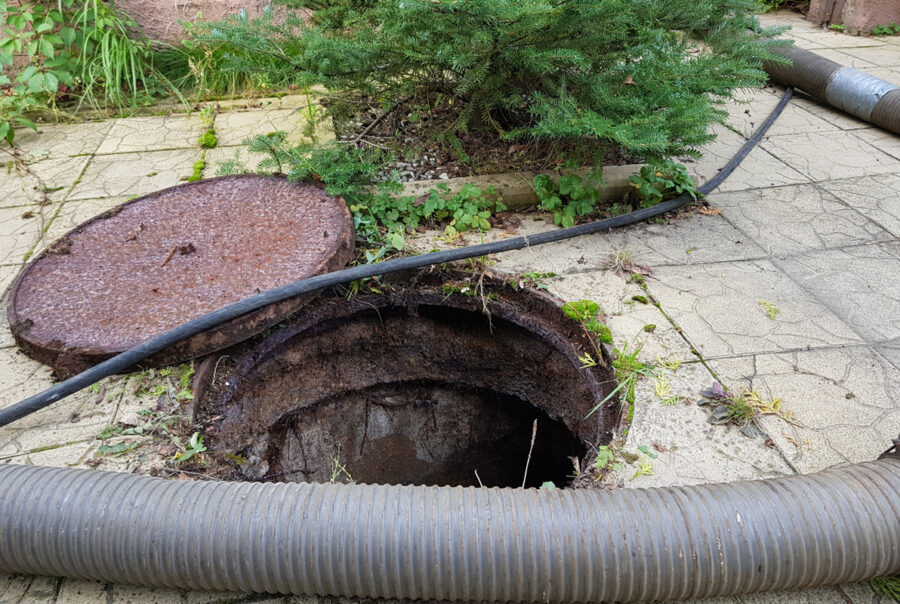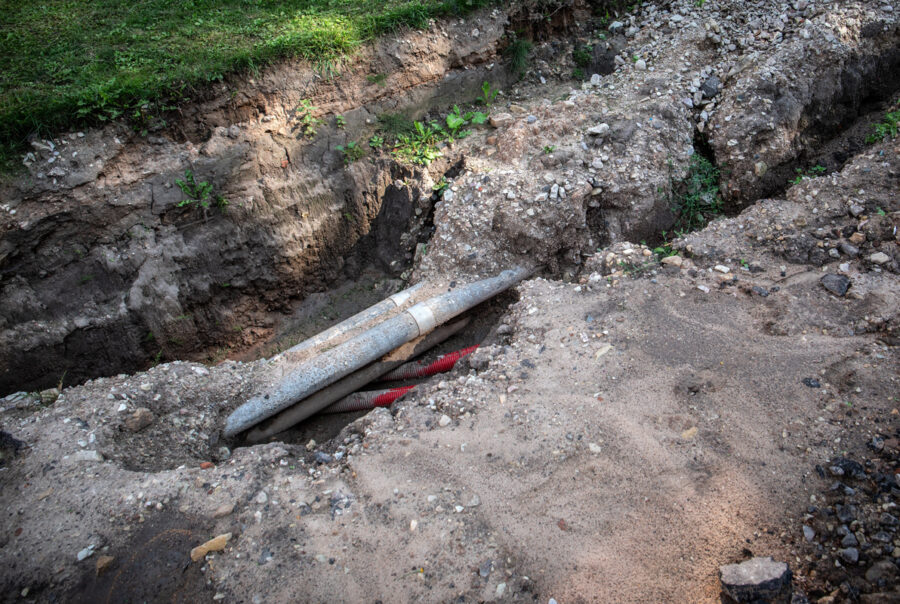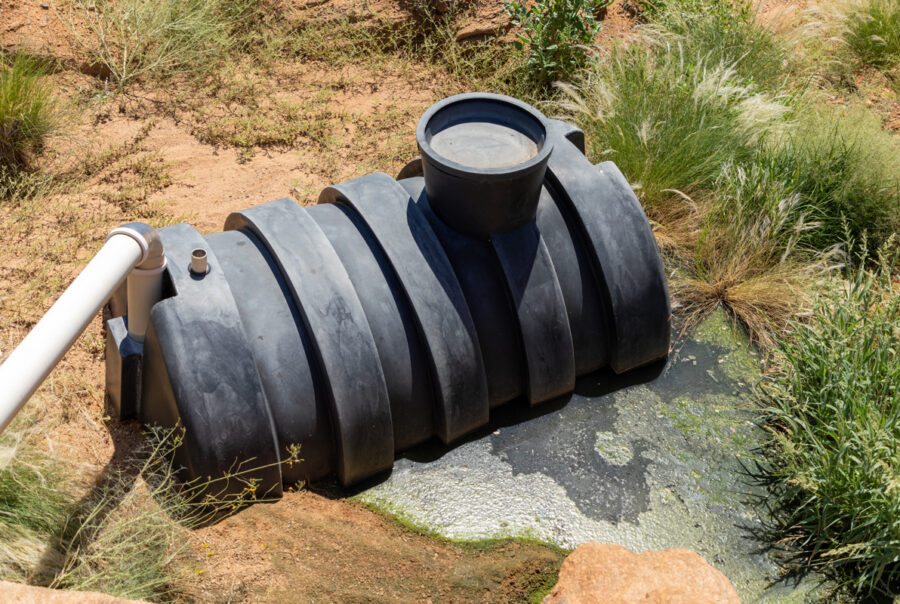Septic/Excavation
This playbook is your go-to resource for understanding the coverage needs of septic contractors — from excavation and equipment risks to protections for pumping, installation, and waste handling operations.
The following playbook is intended to provide guidance on Merchants’ appetite and most desired risk characteristics. Your Merchants team is available to speak about the entirety of a risk that may have characteristics not exactly fitting our desirability.
We also encourage you to refer to Merchants Appetite Guide under the Resources/Tools menu of the Commercial Gateway in Merchants agent portal website for class-specific eligibility.
Description of Operations
Septic system contractors excavate, install, clean, and repair underground waste treatment systems that are used in areas where municipal sewers and water treatment facilities are not available. Construction of a septic system begins with excavation and reinforcement of the area where it is to be installed. A fiberglass or precast concrete tank is placed to receive liquid and solid waste from a building’s plumbing system. Some of the liquid is released through an underground drain field called a finger system. Sludge that hasn’t decomposed must be periodically removed from the holding tank by opening its cover and vacuuming the contents into a tanker truck. The tanker empties its load at a community wastewater treatment plant. Septic system contractors usually offer repair services for septic systems and may also empty grease drains from restaurants and other businesses.
Merchants Appetite
The following risk characteristics are intended to provide guidance on Merchants’ appetite. Your Merchants team is available to speak about the entirety of a risk that may have characteristics not exactly fitting our desirability. Refer to Merchants Appetite Guide under the Resources/Tools menu of the Commercial Gateway on merchantsgroup.com for class-specific eligibility.
Desirable Risks
- Small to large artisan contracting operations
- Revenues up to $6,000,000
- Favorable loss history
- Experience in current trade (new ventures are eligible)
- Subcontracted work at 40% or less with proper risk transfer in place
- Retail receipts at 50% or less
- Residential snow plowing (other than apartments and condos) of 1-4 family single structure dwellings
- Commercial snow plowing of single occupant commercial buildings (max 35 parking spaces)
Ineligible
- Commercial General Contractors
- Industrial, institutional or municipal work
- Underground work in excess of 12 feet
- Exterior work in excess of 4 stories above ground (3 stories in NY)
- Roofing operations (other than incidental work up to 35% of roof surface)
- Street, road, bridge, airport runway, racetrack, or garage parking deck construction or repair
- High voltage work performed on power lines in excess of 220 volts
- Plowing of high traffic areas (ex – strip plazas, shopping centers, big box stores, religious institutions, medical centers, apartment complexes)
Exposures
Understand the key risks contractors face in the field — and how each trade’s exposures can impact insurance coverage, potential claims, and safe day-to-day operations.
Automobile Exposure
Automobile exposures are very high due to the transportation of waste products on tanker trucks. Drivers should be aware of and be able to perform cleanup procedures in the event of a collision or vehicle overturn. In rural areas, roads may be narrow and the ground uneven, increasing the risk of collision and overturn. Drivers should be trained and experienced in driving under adverse conditions. All drivers must be well trained and have valid licenses for the type of vehicle being driven. MVRs must be run on a regular basis. Random drug and alcohol testing should be conducted. Vehicles must be well maintained with records kept in a central location. Drivers may need a hazardous materials (“hazmat”) endorsement to transport wastewater removed from septic tanks.
Completed Operations Liability Exposure
Completed operations liability exposures include contamination of the customer’s property due to improper installation, cleaning, or repair of or damage to the holding tank or finger system. Methane gas may be inadvertently vented into the building causing serious injury or death to the occupants.
Crime Exposure
Crime exposures are from employee dishonesty, including theft of customers’ goods by the contractor’s employee. Background checks, including criminal history, should be performed on all employees handling money. There must be a separation of duties between persons handling deposits and disbursements and reconciling bank statements. If customers pay the contractor at the job site, receipts should be provided.
Inland Marine Exposure
Inland marine exposures include accounts receivable if the contractor offers credit to customers, contractors’ equipment and hand tools, goods in transit, installation floater, and valuable papers and records for customers’ and suppliers’ information. There may be computers for tracking inventory. Backup copies of all data should be stored off premises. Contractor’s equipment includes employees’ hand tools used to uncover the tank opening and make repairs. Vacuum units, hoses and other equipment are used to empty the tank. Excavation equipment and tanks can be large and difficult to transport without adequate loading, tying down and unloading procedures. Ground at the construction site may be uneven. Equipment may strike underground objects or utility cables, fall into holes or pits, slip or fall into mud, water or sinkholes, be damaged in rock, land, or mud slides, or burst into fire from overload. Equipment may be subject to loss from theft, chemical damage, collision and overturn. If the contractor rents, leases or borrows equipment or rents, leases or loans equipment to others, the lease contract should specify responsibilities for providing insurance.
Personal Injury Exposure
Personal injury exposures include assault and battery and invasion of privacy. Background checks should be conducted for any employee who will have regular contact with customers. The use of subcontractors as well as any contractual liability exposures should be examined.
Premises Liability Exposure
Premises liability exposures at the contractor’s office are generally limited due to lack of public access. Equipment stored in an open yard may present an attractive nuisance to children and other trespassers. At the job site, excavation, construction, opening, and vacuuming the holding tank presents the possibility of injury to the customer. The area of operation should be restricted by barriers and proper signage to protect the public against trips, slips and falls over equipment. Digging can result in cutting utility cable, damaging property of the utility company and disrupting service to neighboring residences or businesses. Absence of detailed procedures to verify the location of the tank cover and determine utility locations prior to digging may indicate a morale hazard. Construction sites create an attractive nuisance hazard, especially if work is close to residential areas. Job sites should be secured.
Property Exposure
Property exposures at the contractor’s own location are usually limited to an office and storage of materials, equipment, and vehicles. Property stored outside may be a target for vandalism.
Workers Compensation Exposure
Workers compensation exposures are very high. Back injuries, hernias, sprains and strains can be caused by lifting, installing tanks and finger systems, pulling the hoses and equipment used in cleaning the tanks, and working from awkward positions. Asphyxiation can result from the release of methane gas should older septic tanks collapse or from an improperly vented tank. Cumulative exposure to high-decibel operations may result in permanent hearing impairment. Work with hand tools or the carelessness of fellow employees can result in injury such as cuts, scrapes, or puncture wounds. Additional sources of injury include illness from coming into contact with harmful bacteria, electric shock, foreign objects in the eye, repetitive motion injuries, temperature extremes, and auto accidents during transportation to and from job sites. The absence of good maintenance, proper use of basic safety equipment, such as properly installed guards, steel-toed shoes, and eye protection, and strict enforcement of safety practices may indicate a morale hazard.
Risk-Smart Septic Contractors
Click each photo to see what makes it best-in-class — and how these features help minimize risk and reduce exposures on job sites and contractor-owned properties.
Red Flags in the Field
Click each photo to learn what’s not-so-great — and how these conditions can increase risk, raise exposures, or lead to costly claims on contractor job sites or properties.
Automatic Coverages
These built-in coverages come standard with our contractor policies, offering added protection for income, tools, equipment, property, and more — all at no additional cost.
Annual Aggregate Limit Per Location
This policy conditions amends the General Aggregate Limit to apply separately to each location owned by or rented to the insured.
Contractors Equipment – Employee Tools and Clothing
Under the Contractors Equipment form, coverage for employee tools and equipment are included for up to $5,000 per occurrence, but not more than $1,000 per employee. The occurrence limit may be increased. Coverage is subject to a $500 deductible.
Contractors Equipment – Fuel, Accessories and Spare Parts
Under the Contractors Equipment form, coverage for fuel, accessories and spare parts are included for up to $10,000 per occurrence. The limit may be increased and is subject to a $500 deductible.
Contractors Equipment – Trailers and Contents
Under the Contractors Equipment form, coverage for loss or damage to owned, leased or rented office and construction trailers and their contents that is caused by or resulting from a covered cause of loss is included for up to $25,000. This additional coverage does not include coverage for contractors tools. The trailer and contents limit can be increased and is subject to a $500 deductible.
Damage to Premises Rented to You (Fire Legal Liability)
Business Liability coverage for damage because of property damage to a premises while rented to the insured or temporarily occupied by the insured with permission of the owner is provided at a limit of $500,000 unless a higher limit of insurance is shown in the policy declarations.
Employment Practices Liability
Provides coverage on a claims made basis for injuries to employees due to demotion, wrongful termination, wrongful denial of opportunities, including wrongful hiring and supervision, retaliatory actions, coercion, harassment and other types of work-related discrimination, libel, humiliation and similar acts.
Equipment Leased or Rented from Others
Coverage for contractors equipment the insured owns but leases or rents from others for which the insured is legally liable in a written agreement is covered if damaged by a covered cause of loss. The limit for this extension is $50,000. A $500 deductible applies. Higher limits are available.
Installation Coverage
Coverage for direct physical loss or damage by a covered cause of loss applies to fixtures, supplies, materials and equipment that are on the jobsite, in storage or in transit in order to be installed. The following limits apply:
- Property at jobsite $10,000
- Property at temporary storage location $5,000
- Property in transit $5,000
- All covered property included above combined in any one occurrence is $20,000
Primary & Non-Contributory - Other Insurance Condition
This insurance is primary and will not seek contribution form any other insurance available to an additional insured under the policy provided that the additional insured is a Named Insured under such other insurance and the insured has agreed in writing in a contract or agreement that this insurance would be primary and would not seek contribution from any other insurance available to the additional insured.
Rental Reimbursement
Under the Contractors Equipment form, coverage for actual rental expenses for renting equipment are included for up to $10,000 per occurrence, but not more than $500 per day. A 72 hour waiting period applies. The per occurrence limit can be increased.
Unscheduled Tools and Equipment
Coverage for direct physical loss, caused by a covered cause of loss, to contractors unscheduled tools and equipment owned by the insured or in the insured’s care, custody or control is provided at a limit of $3,000. A $500 deductible applies. Higher limits are available.
Voluntary Property Damage
Voluntary Property Damage coverage is provided for unintentional property damage to the property of others caused by the insured or while the property is in the insured’s possession and the damage is arising out of the operations described in the policy. The coverage limit is $10,000 per occurrence/$25,000 aggregate with a $500 per claim deductible.
Waiver of Subrogation
Waiver of rights of recovery is waived against any person or organization, when the insured has agreed in writing in a contract, agreement or permit that was executed prior to the bodily injury, property damage, or personal injury and advertising injury.
Helpful Resources
Navigate to “Merchants On-Demand” from the homepage of your Merchants agent portal website to access flyers for your reference, as well as flyers you can distribute to clients.

